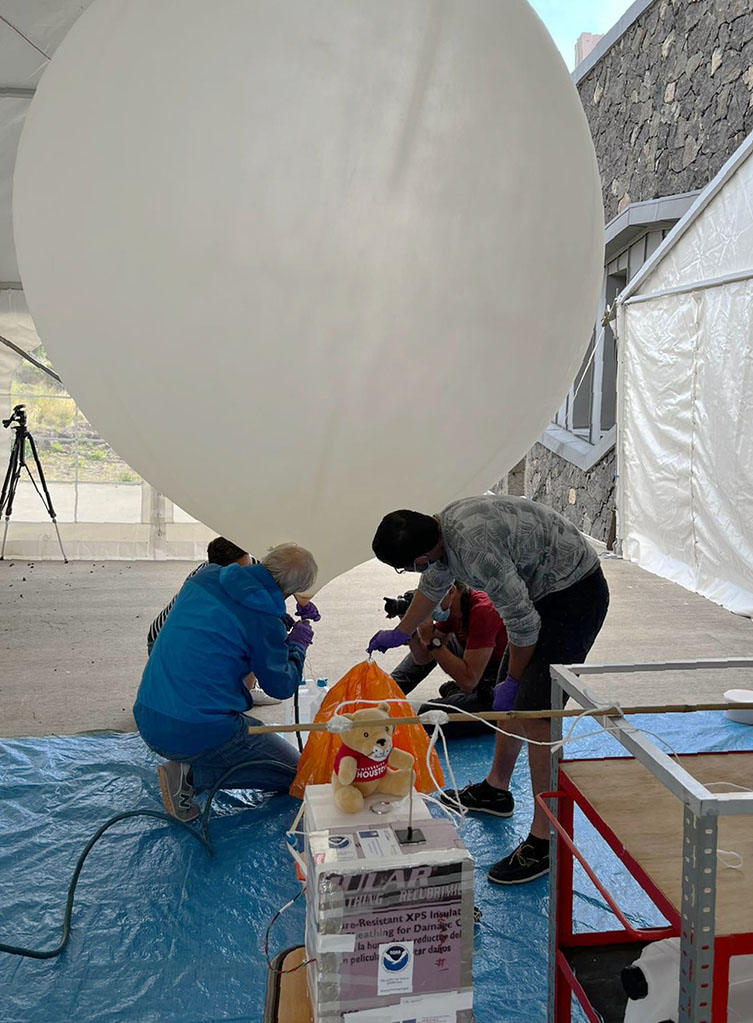Sergio Alvarez Flies to Réunion Island in Indian Ocean to Deploy Research Instruments
An underwater volcano several miles from the Polynesian country Tonga covered the sky, Pacific Ocean and the country’s islands in ash when it exploded on Friday, January 14, causing tsunamis across the Pacific.

As the plume of ash moved westward across the globe, researchers at the University of Houston’s College of Natural Sciences and Mathematics mobilized the following Monday to get a team together to study gases in the toxic plumes.
UH atmospheric science researcher Sergio Alvarez and Paul Walter, associate professor at St. Edward’s University in Austin, are part of the Tonga volcano Rapid Response Experiment (TR2EX).
The experiment is the first opportunity to take measurements of sulfur dioxide in the stratosphere using a weather balloon and a recently patented sulfur dioxide sonde; this instrument, developed by the team at UH and St. Edward’s, takes measurements at high altitudes.
A few days after the eruption, Alvarez and Walter flew to Réunion Island about 600 miles off the coast of Madagascar to carry out the experiment. They were joined by a group from the U.S. National Oceanic and Atmospheric Administration and researchers from the l'observatoire du Maïdo, or the observatory of Maïdo, located on the island.
Alvarez and Walter launched their first balloon Friday, January 21, at the observatory, just 14 hours after landing from back-to-back red eye flights.
Their balloons sampled the volcanic plume and measured a large amount of sulfur dioxide in the stratosphere. Some of the balloon flights reached an altitude of 90,000 feet.
This experiment marks the first deployment of their sulfur dioxide sonde for stratospheric measurements, and the first attempt by this team to be fully operational in the field within a week of an eruption.
The data collected will be used to help improve climate models, satellite observations, and to validate dispersion modeling, which models the atmospheric processes that disperse a pollutant in the air. The data collection is also a demonstration of the efforts needed to mobilize a team quickly to respond to future weather and geological events.
Alvarez works with UH research associate professor James Flynn in the Department of Earth and Atmospheric Sciences. Alvarez’s first major air quality study was in 2000.
“Since then, I have never had a study where I was given only about 48 hours to pack instruments and supplies to intercept a volcanic plume in the stratosphere,” Alvarez said. “In this case, I was headed to a small island near Madagascar, a place I had never heard of. We stayed there seven days, and I am happy to say that we were successful, detecting the plume four times, at altitudes higher than most airplanes can fly. This the reason why I like what I do.”
Flynn said the eruption appears to have injected a modest amount of sulfur dioxide into the stratosphere. Other eruptions like Pinatubo, a volcano in the Philippines that erupted in 1991, can inject enough sulfur dioxide to lead to a cooling effect on the planet, which can last for several years.
“It is this effect that some groups are studying as a possible way to mitigate climate change,” said Flynn. “Being able to respond and observe natural experiments like this are critical to our ability to understand what impacts there may be on our planet from future eruptions or human intervention.”
- Rebeca Trejo, College of Natural Sciences and Mathematics